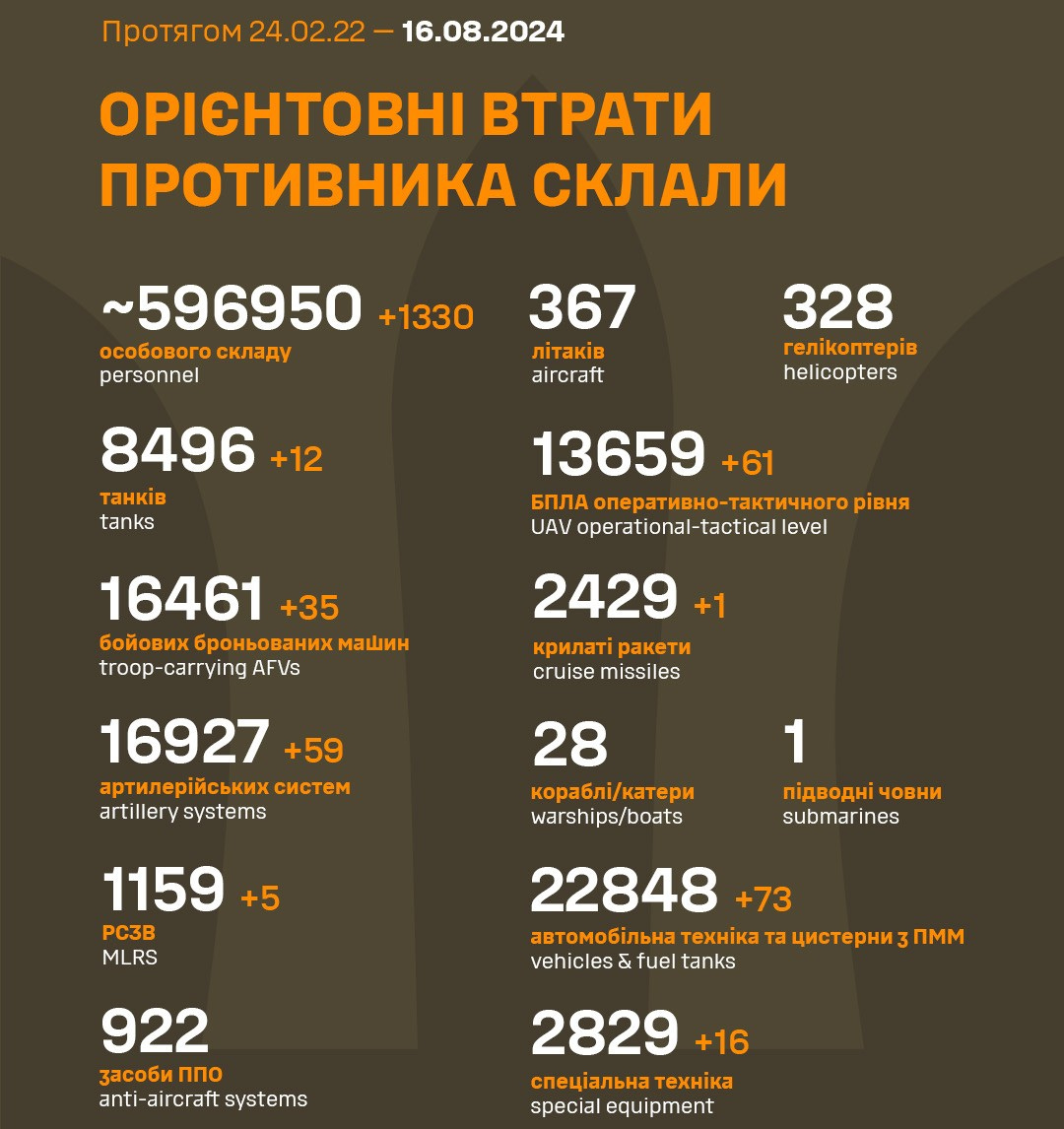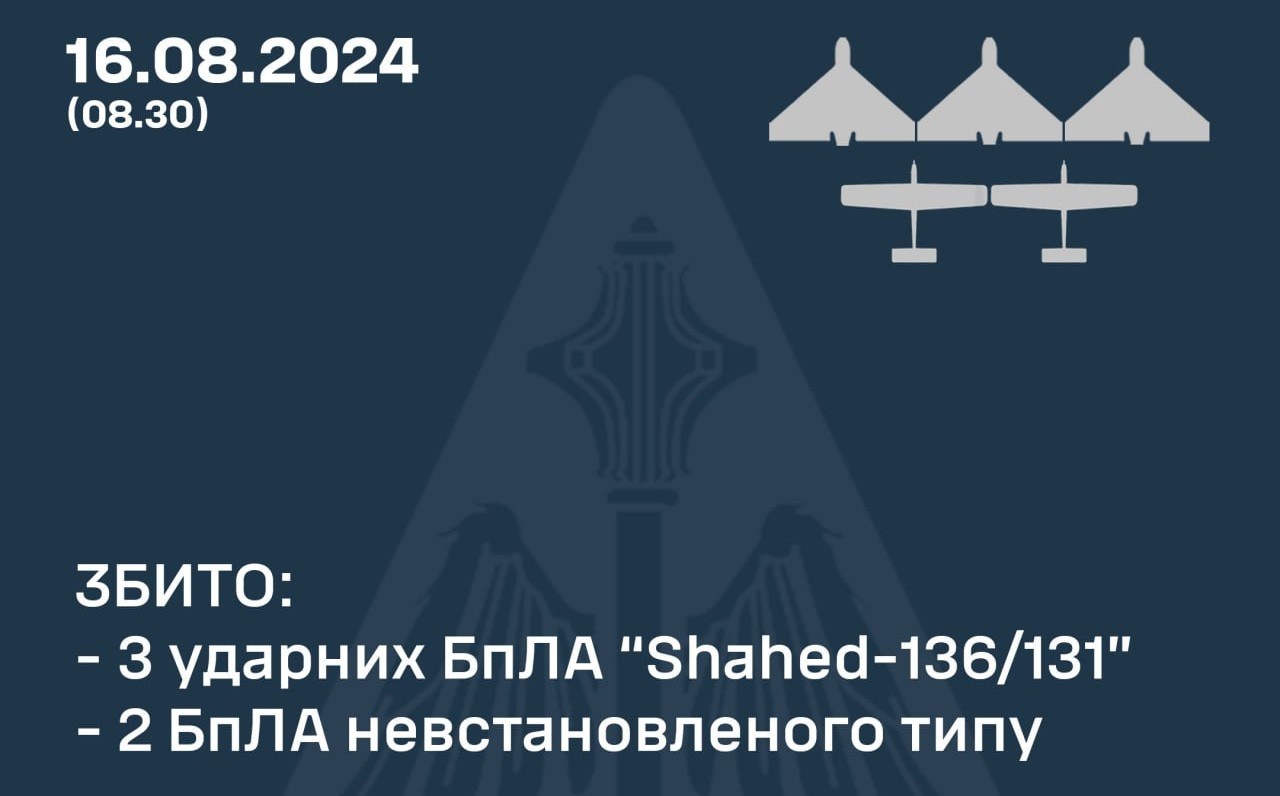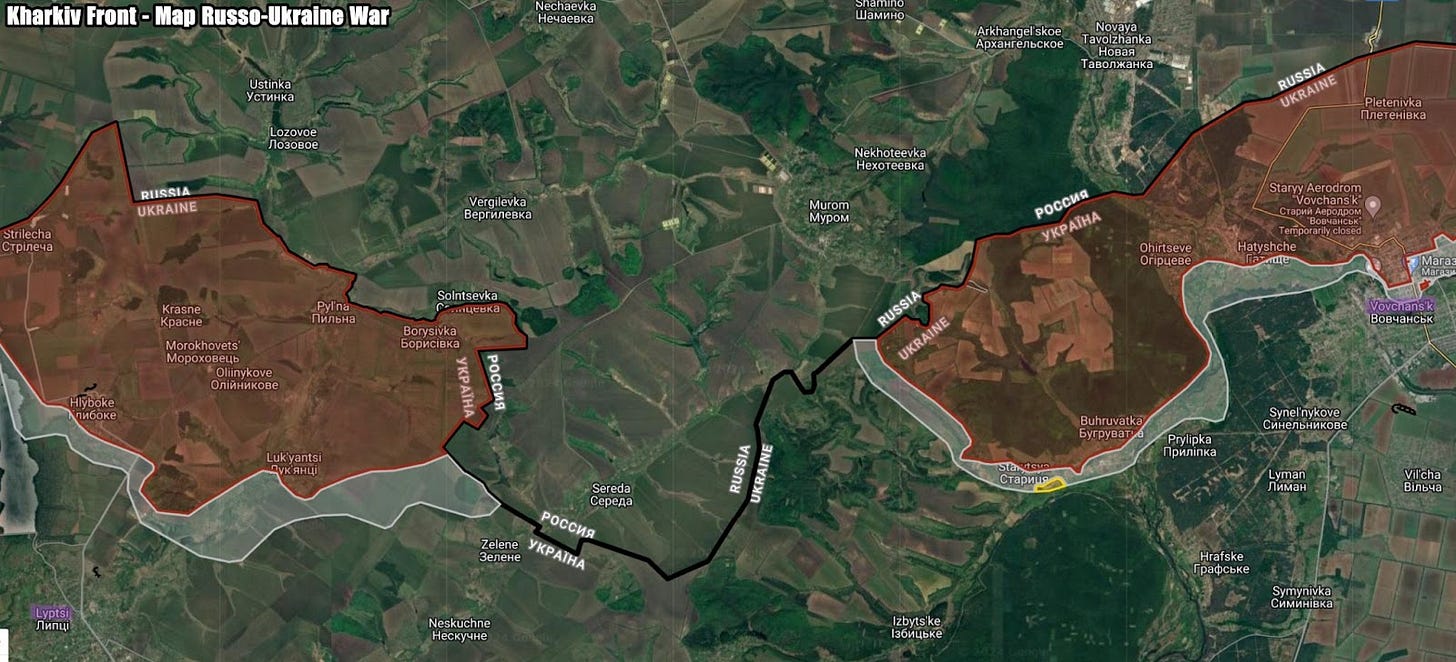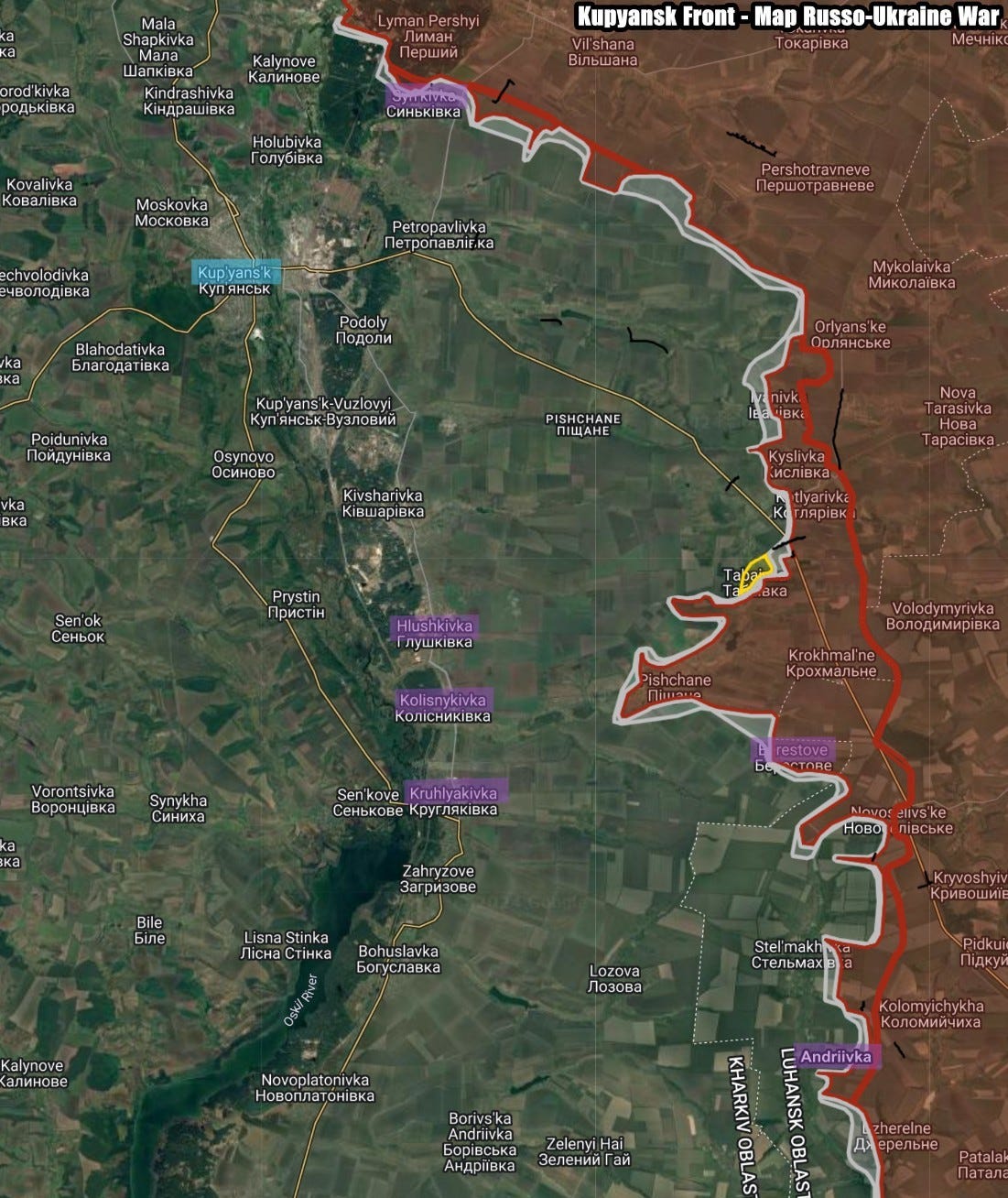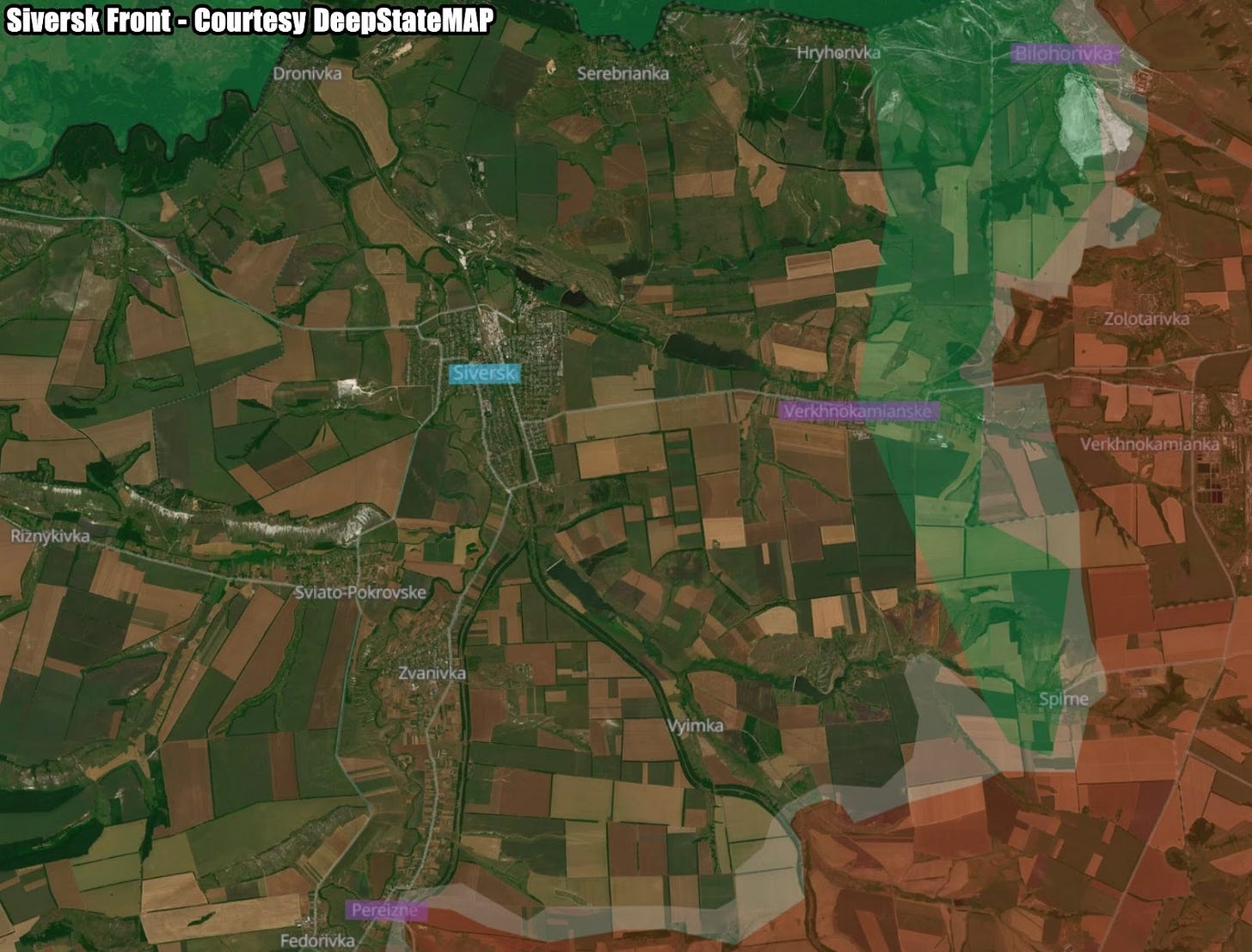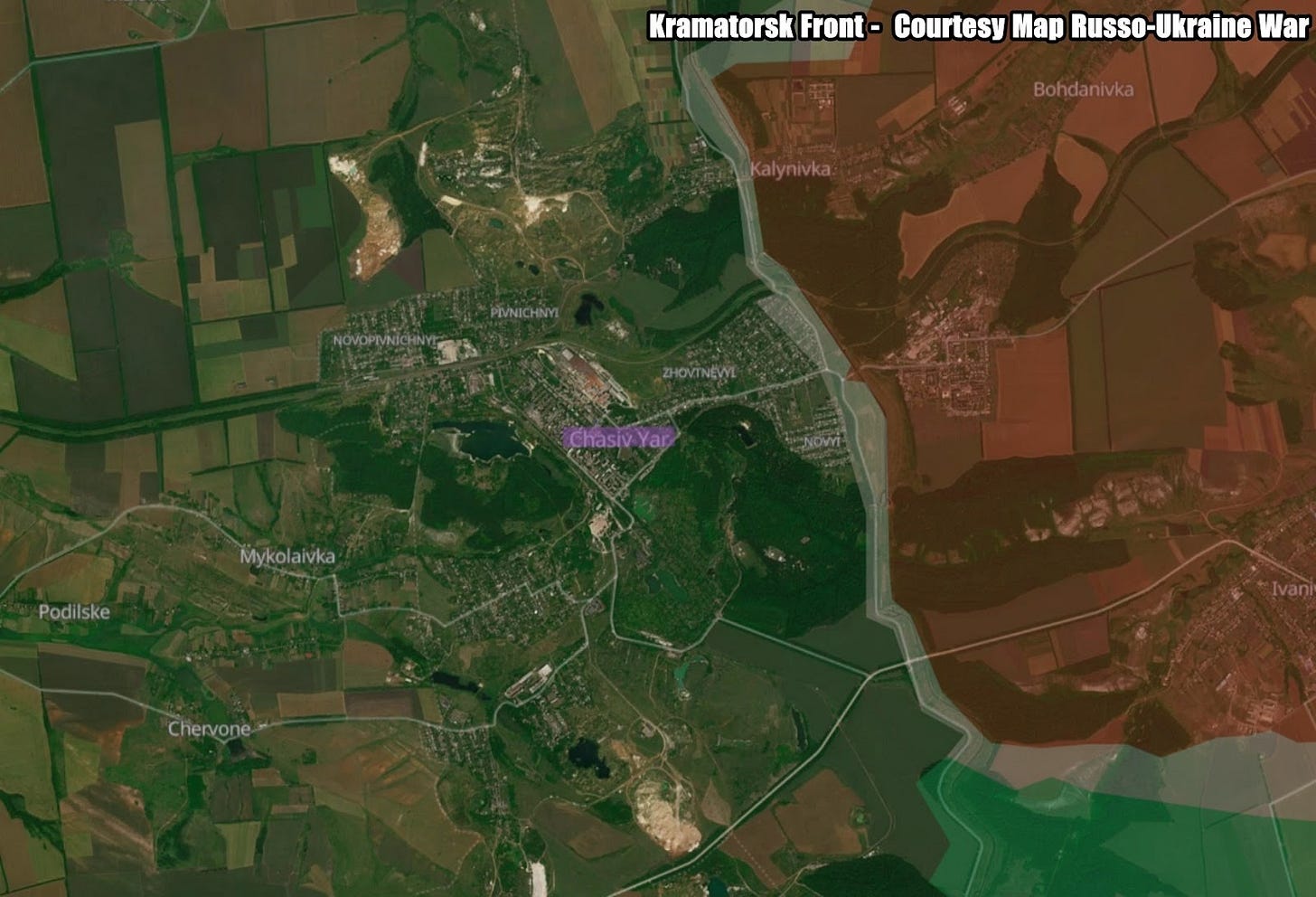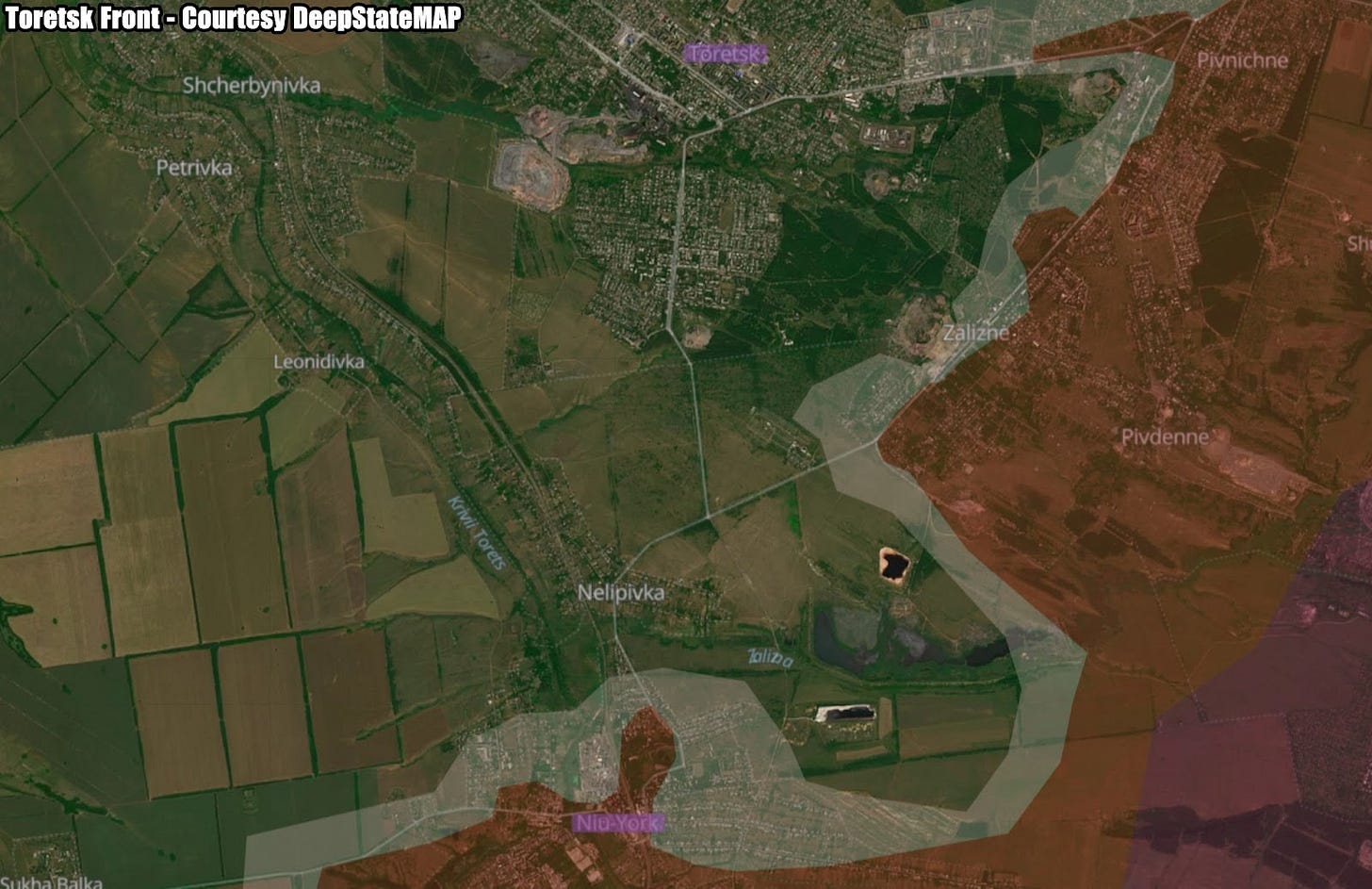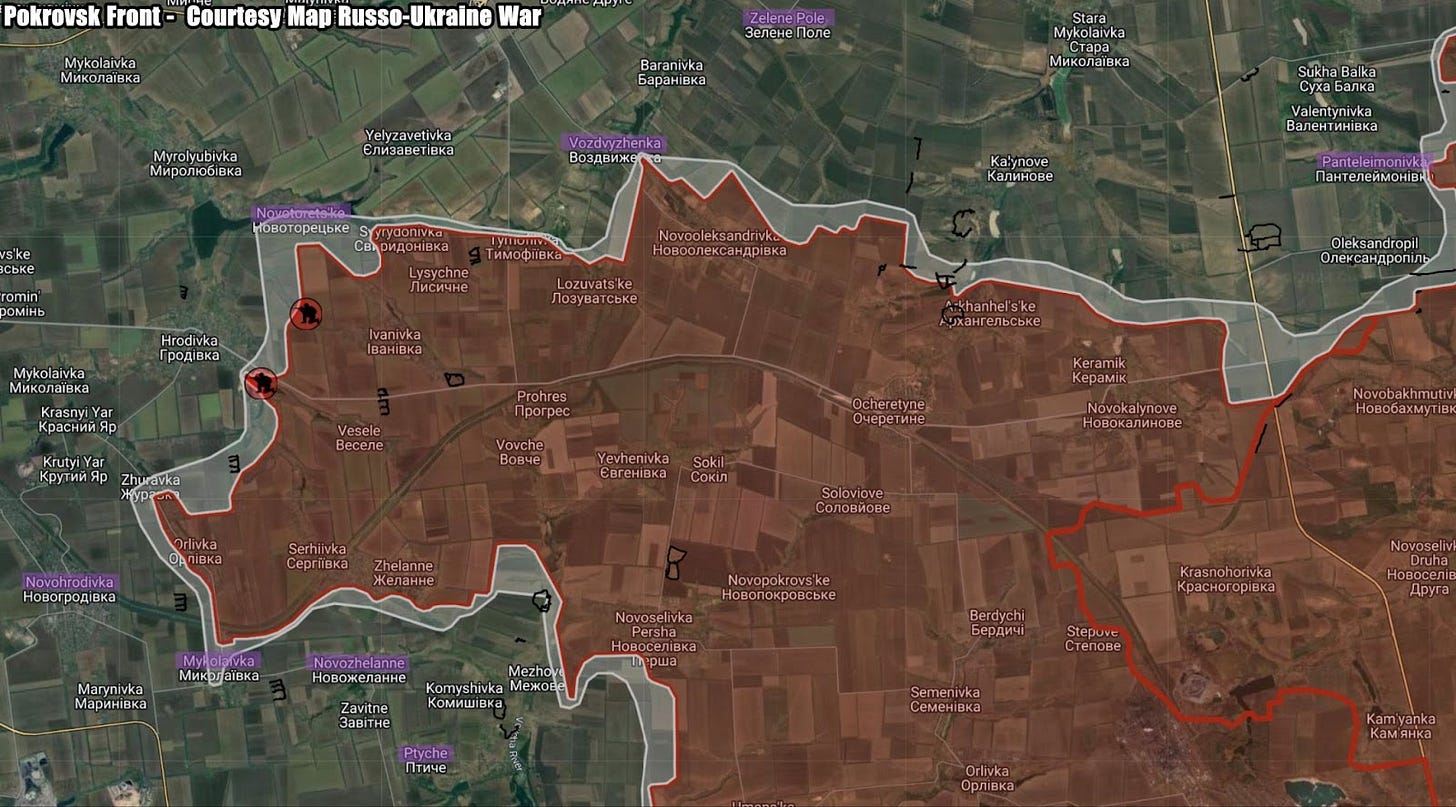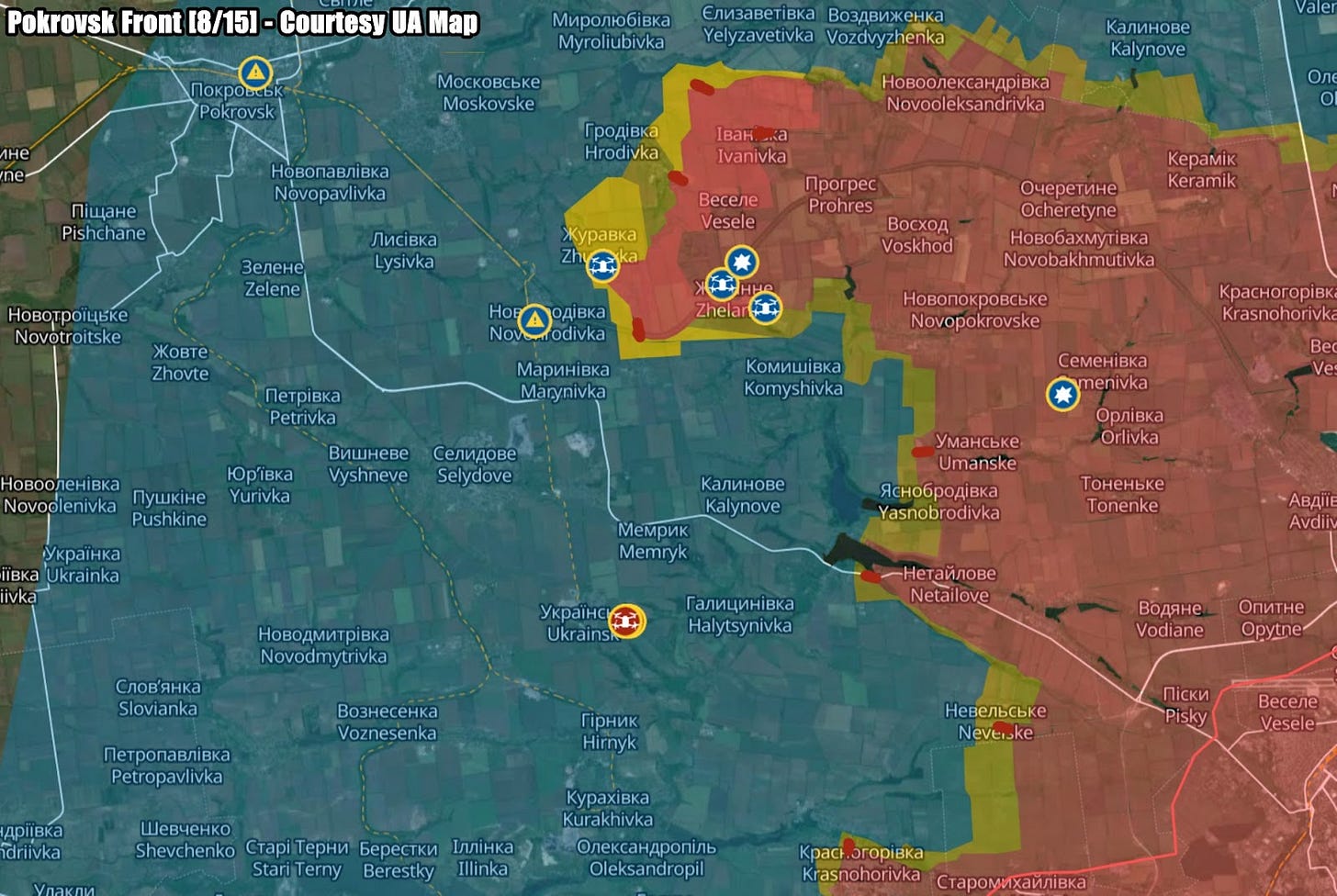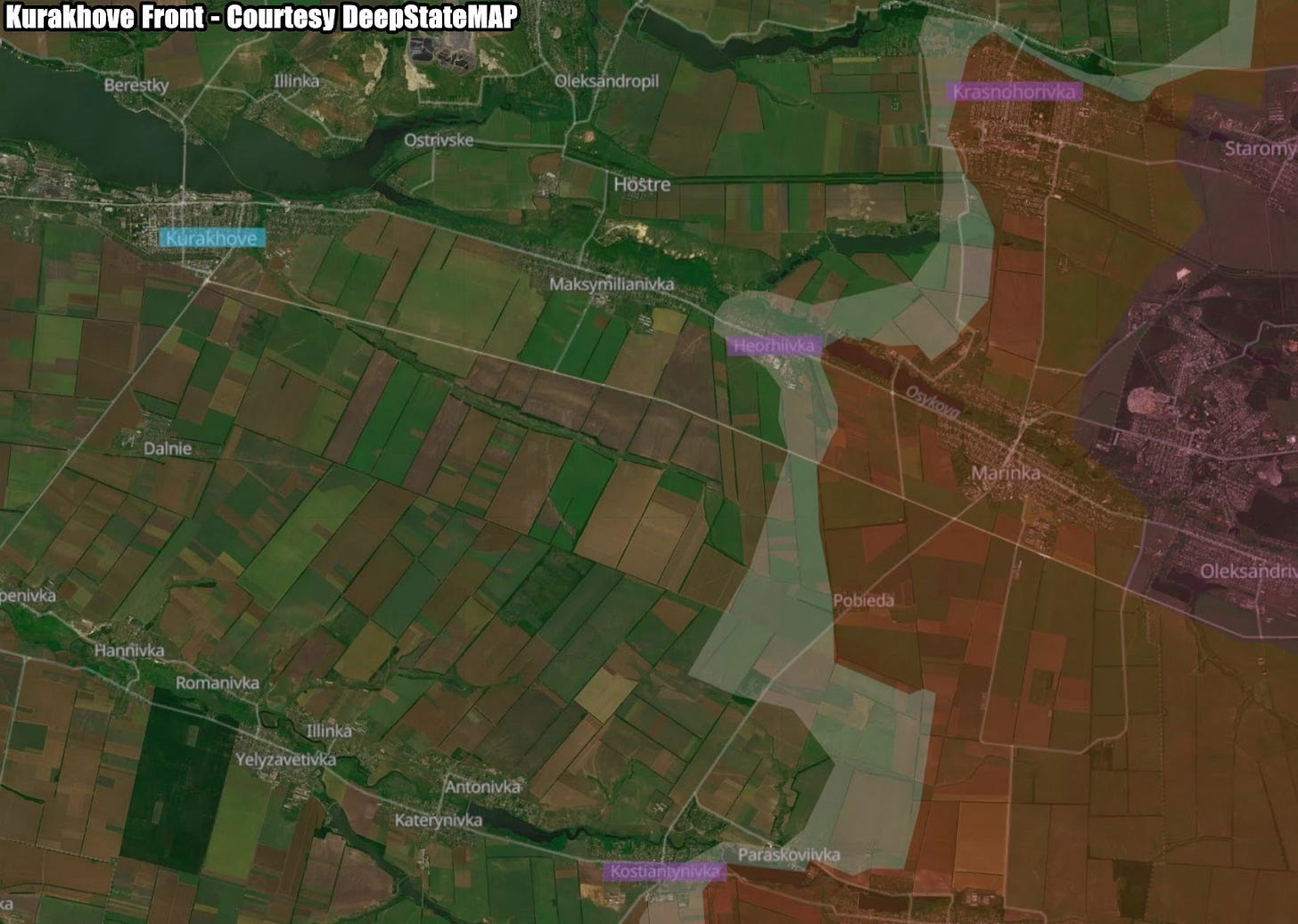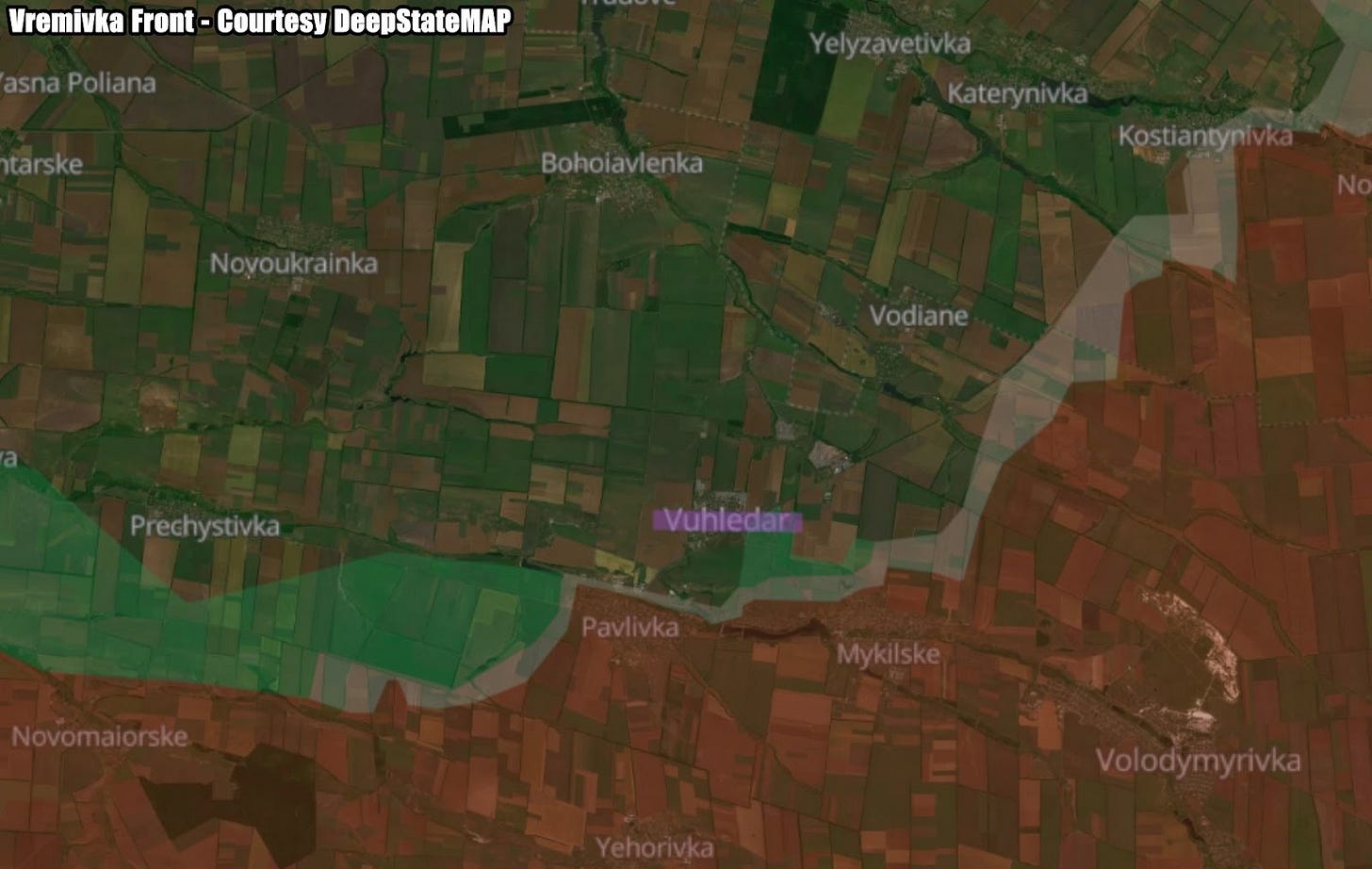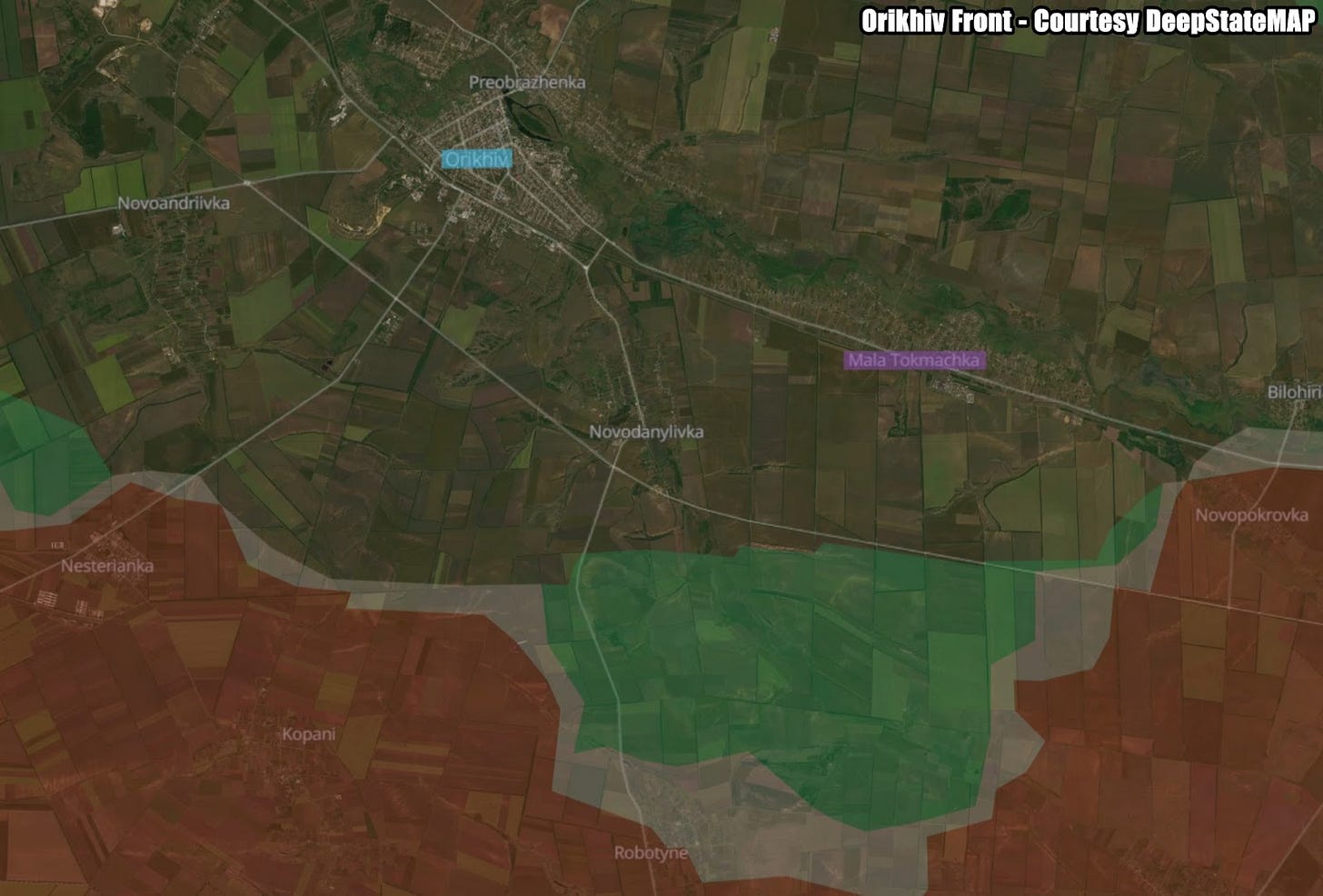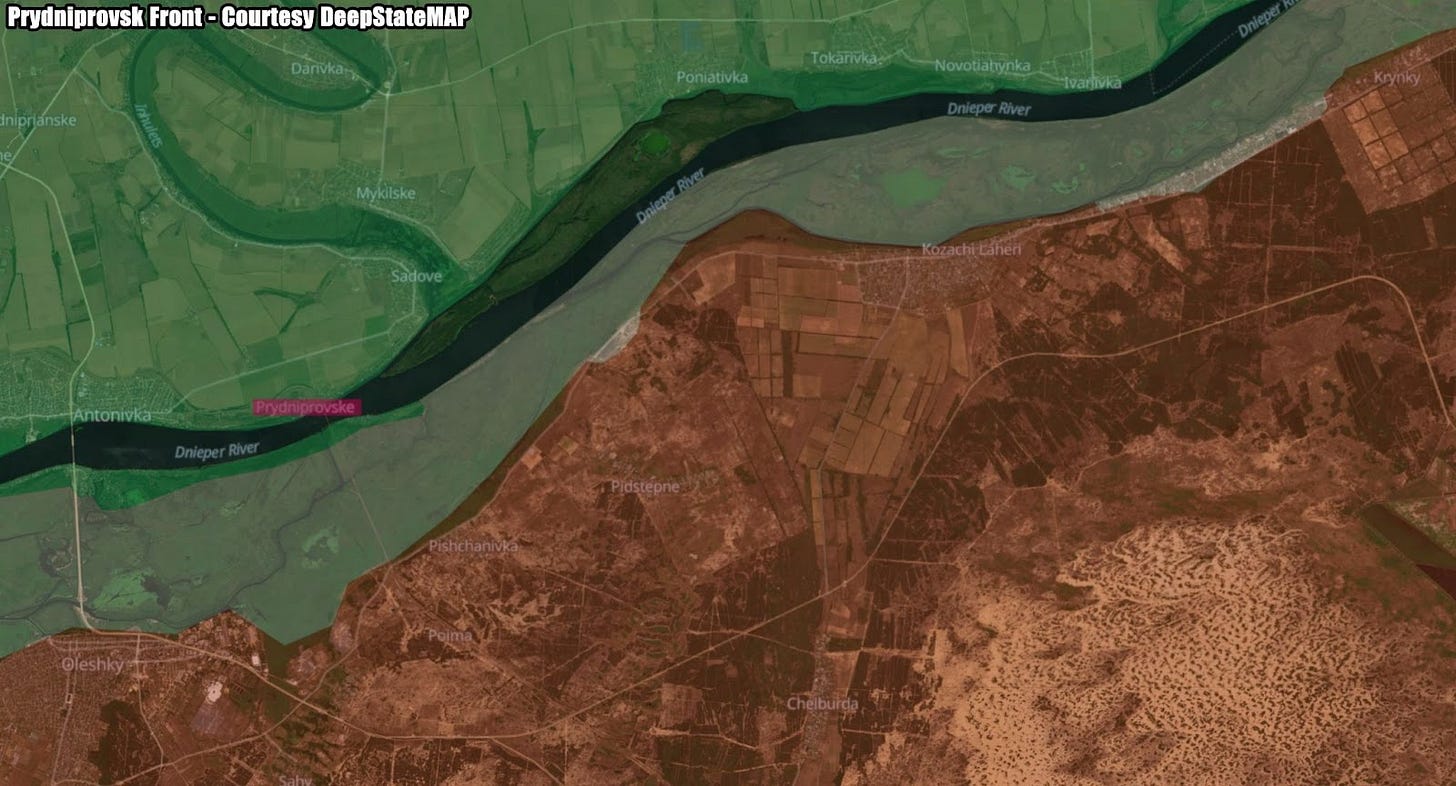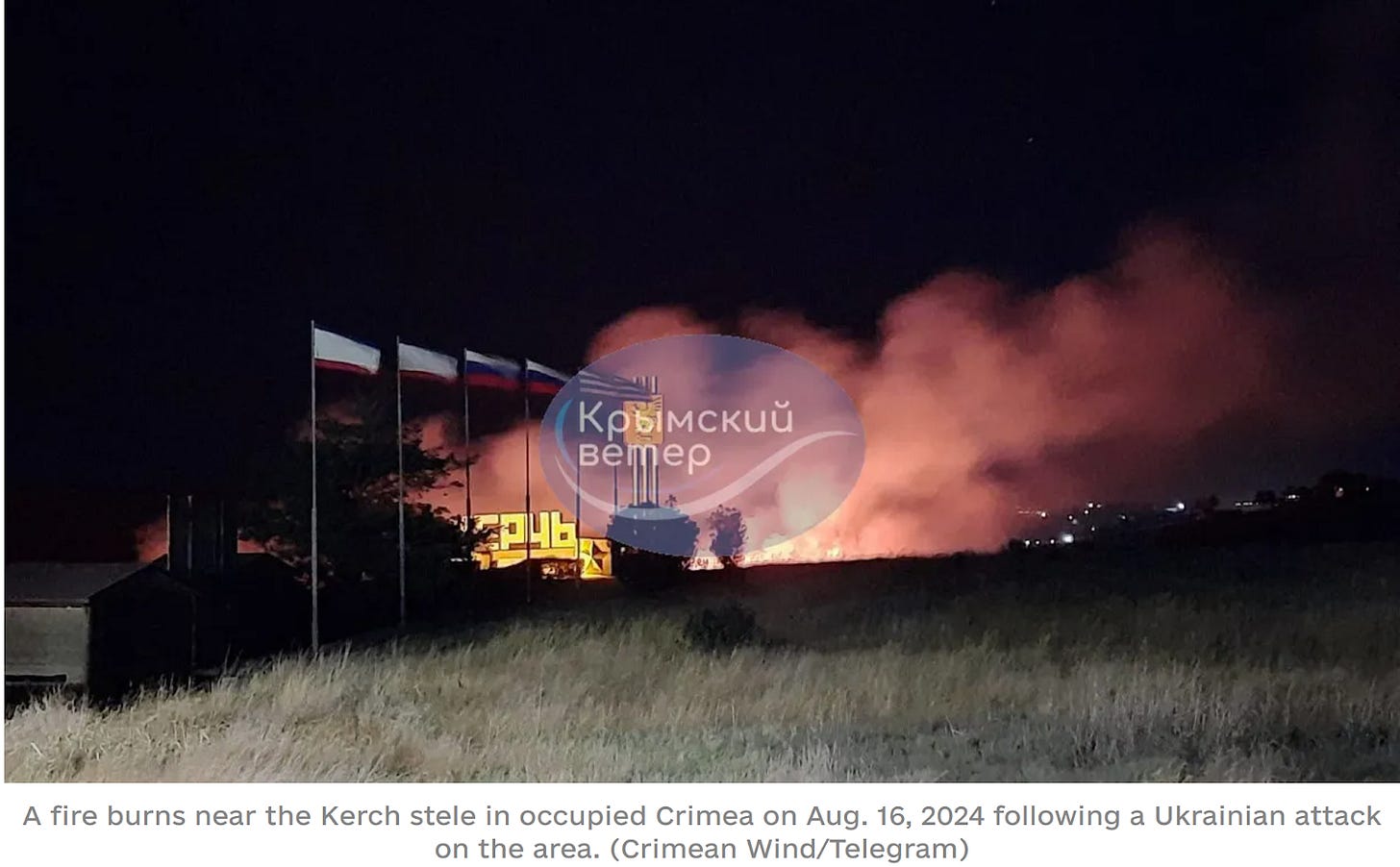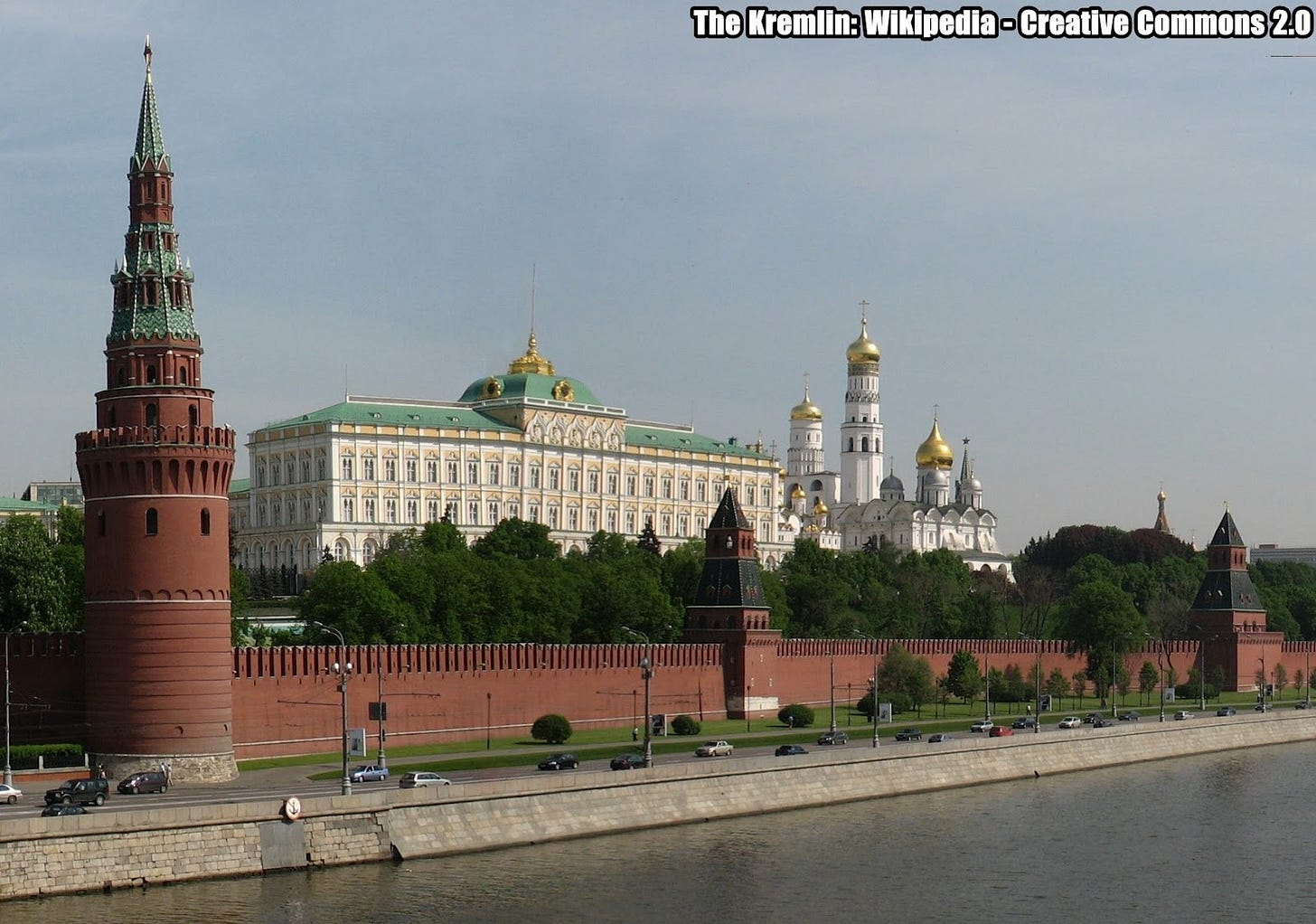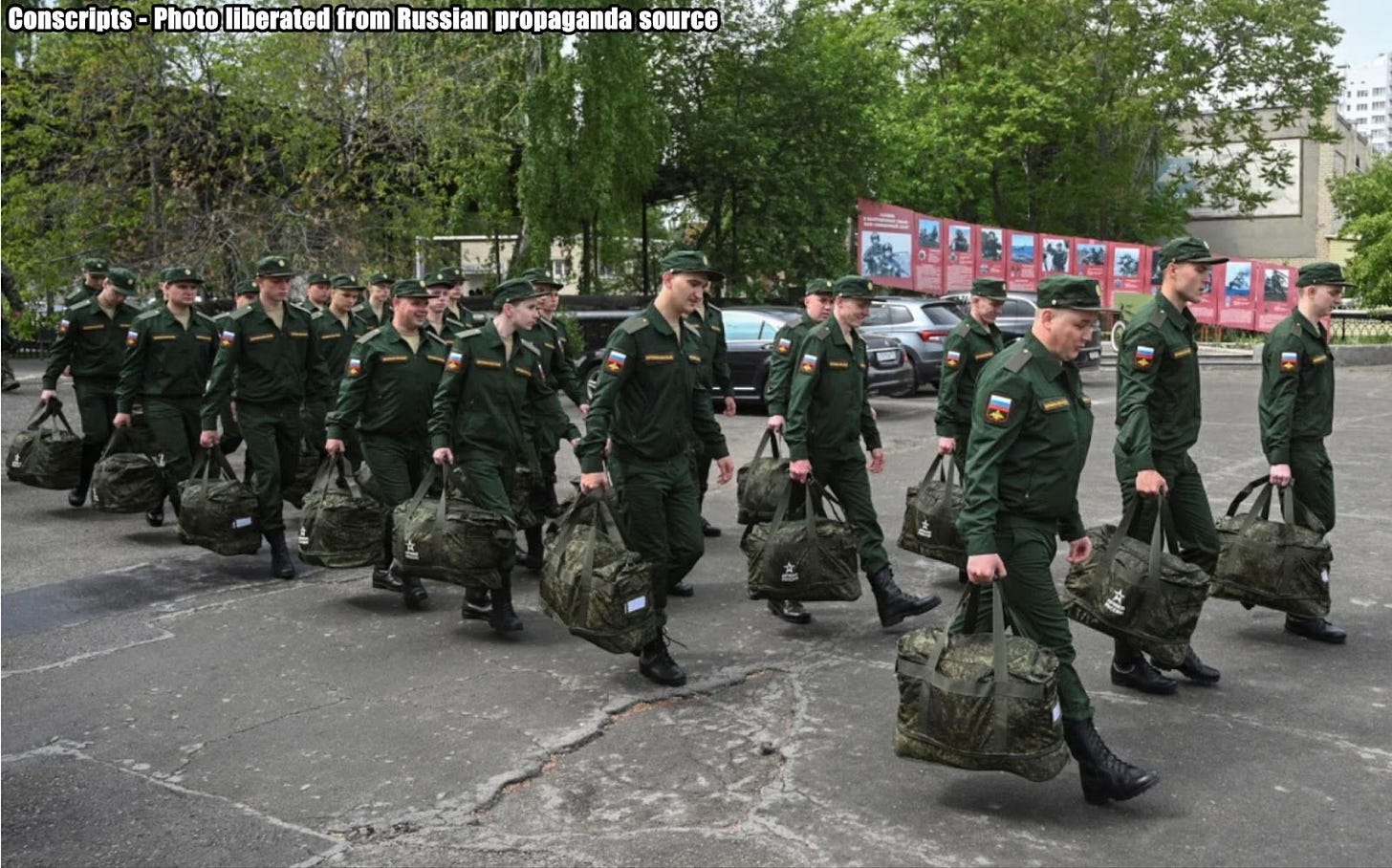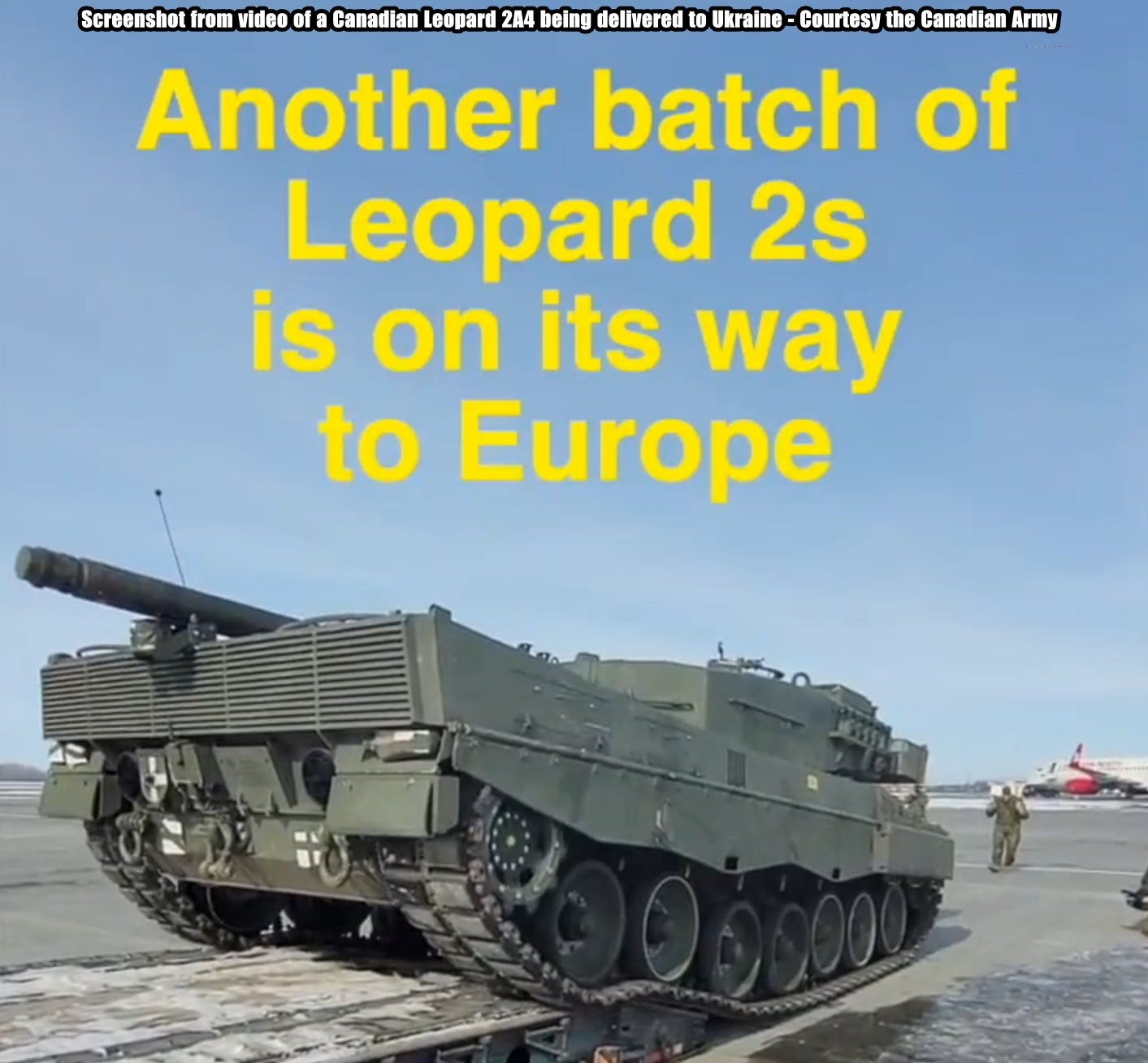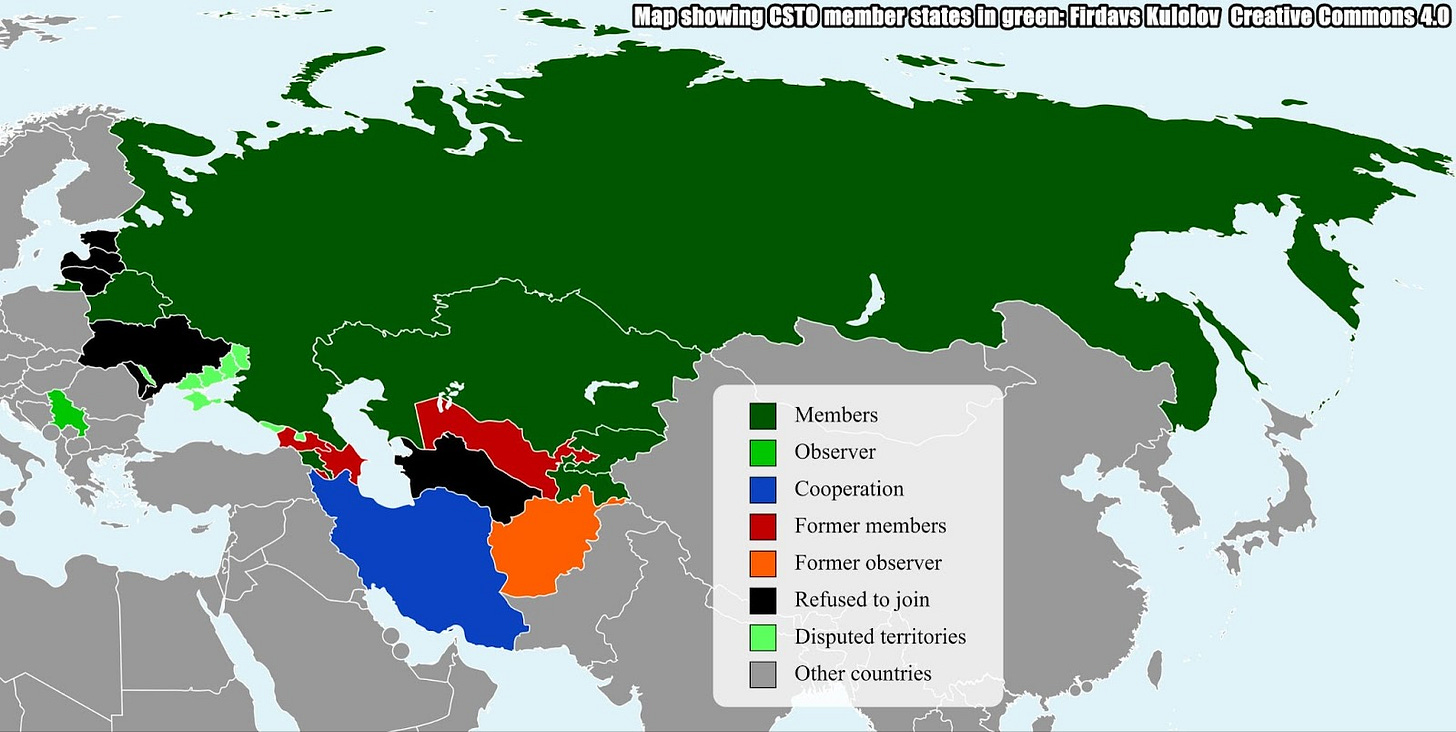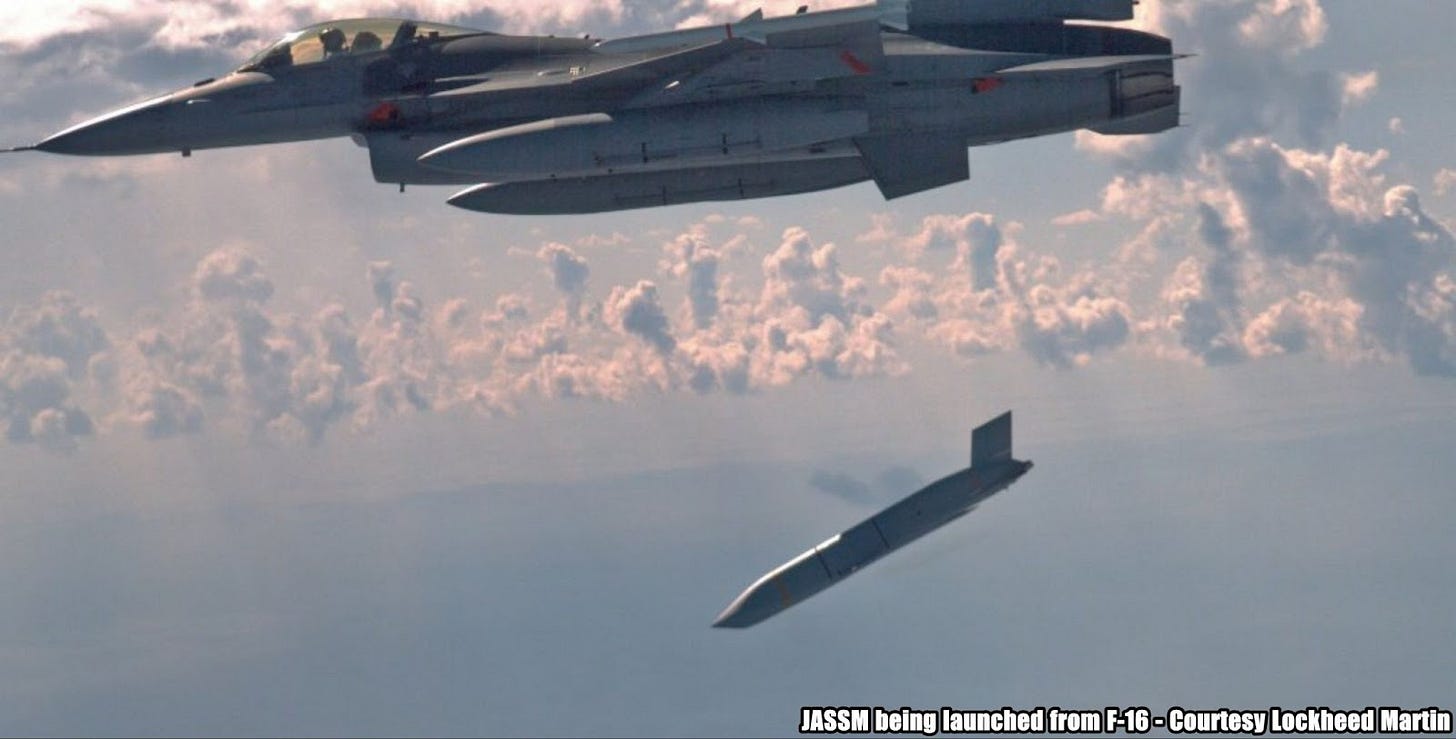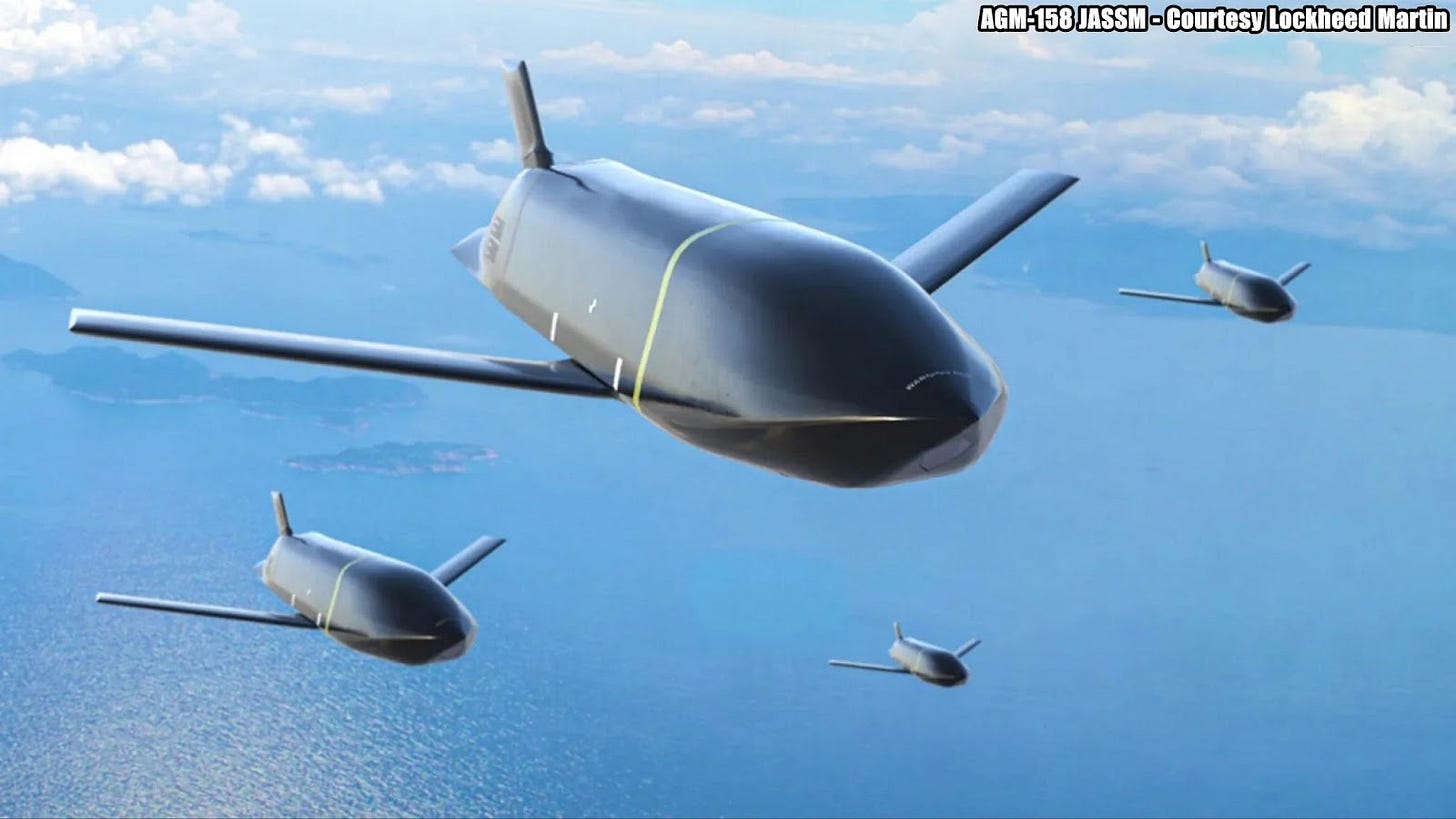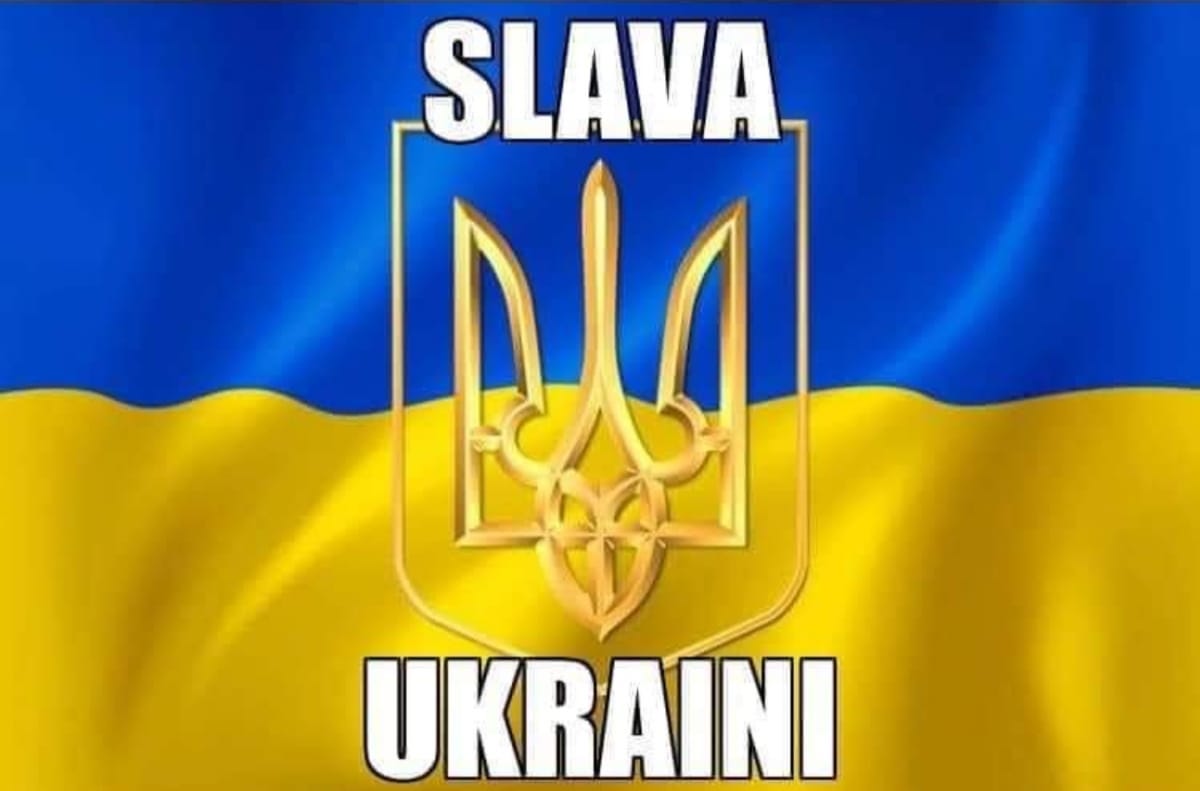Slava Ukraini! In early 2022 I began a Telegram channel aggregating news from a number of sources daily on the war in Ukraine. Since June 2023 I have provided a daily draft for the Ukraine War Brief Podcast collecting news from over 70 sources daily, much of which forms the basis of the script. While the Podcast is on hiatus I will make this Draft available here both on my own Substack and The People’s Media for those who wish to keep up with events on a daily basis.
Announcement - beginning this week and going forward, I will suspend publishing of the Draft on Sundays - Casualty figures and any major news will be reported in Mondays edition.
ALONG THE CONTACT LINE
GSAFU Morning Report
The General Staff of the Armed Forces of Ukraine in its Operational Information update at 22:00 on Aug 15 stated that day 994 of the full-scale invasion of the Russian Federation against Ukraine was about to begin.
During the past day, 111 combat engagements took place. Over the past 24 hours, the enemy carried out 5 missile strikes, 53 air strikes, 502 drone strikes and more than 3,100 artillery strikes across the positions of Ukrainian forces.
At the same time, Ukrainian soldiers continue to inflict losses in manpower and equipment on the occupying troops, exhausting the enemy along the entire front line and continue to disrupt the plans of Russian occupiers to advance deep into the territory of Ukraine.
Air Force Daily Report
On the night of August 16, 2024, the Russian occupiers struck with 3 Iskander-M ballistic missiles, 3 Shahed-type strike UAVs and 2 unspecified drones from the Kursk region.
As a result of anti-aircraft combat, all enemy UAVs were shot down in the Poltava, Zhytomyr, Kirovohrad, Odesa, and Mykolaiv regions by the mobile fire groups of the Defense Forces and the EW means of the Air Force.
The Russian Border Incursion
Ukraine consolidates their gains while continuing to advance in Kursk
The Institute for the Study of War (ISW), a US based think tank, in its Aug 15 Russian Offensive Campaign Assessment assessed that Ukrainian officials are taking steps to consolidate and coordinate the management of ongoing Ukrainian operations in Kursk Oblast while continuing to highlight Ukrainian advances.
Ukrainian President Volodymyr Zelensky held a meeting with the Stavka (Ukrainian high command) on August 15 and heard reports from military leadership on the situation in Kursk Oblast. Ukrainian Commander-in-Chief Colonel General Oleksandr Syrskyi announced to the Stavka that Ukraine has created a military commandant's office in Kursk Oblast under the leadership of Major General Eduard Moskalyov to "maintain law and order and ensure the priority needs of the population."
Ukrainian Ombudsman Dmytro Lubinets also stated on August 14 that Ukraine is prepared to coordinate prisoner of war (POW) exchanges with Russia and that he is communicating with his Russian counterpart about the possibility of exchanging "hundreds" of Russian POWs that Ukraine has reportedly captured since the beginning of the Kursk operation for Ukrainian POWs currently in Russian captivity.
Syrskyi also reported that since the beginning of the day on August 15, Ukrainian forces advanced between 500 meters and 1.5 kilometers in unspecified areas of Kursk Oblast and have advanced 35 kilometers deep since the beginning of the Ukrainian operation into Kursk Oblast on August 6.
ISW continues to assess that Ukrainian forces do not doctrinally control all the territory within the maximalist extent of claimed Ukrainian advances, but the creation of the commandant's office will likely allow Ukrainian forces to coordinate military actions in the area that falls under maximal Ukrainian claims and safeguard the civilian population.
Several Ukrainian outlets reported on August 15 that sources within Ukraine's Security Service (SBU) stated that Ukrainian forces took 102 Russian military personnel from the 488th Motorized Rifle Regiment (144th Motorized Rifle Division, 20th Combined Arms Army, Moscow Military District) and unspecified Chechen "Akhmat" units as prisoners of war in Kursk Oblast.
Russia has increased forces in the Kursk region after the initial chaos
The UK Ministry of Defence in their Aug 16 Intelligence Update on Ukraine stated that Russia transferred additional forces to the Kursk region, possibly from other parts of the front, and began to build defensive positions in the Kursk region.
Since 06 August 2024 Ukrainian forces have penetrated Russia’s Kursk region to a depth ranging between 10-25km over a frontage of approximately 40 km. Although Russia had established defensive lines and had border forces in the area, these were not prepared to respond to a multi-battalion assault force.
After initial disarray and disorganisation, Russian forces have deployed in greater force to the region, including likely from elsewhere along the contact line. They have also begun to construct additional defensive positions in an effort to prevent Ukrainian advances.
The Khortytsia operational-strategic group
(Responsible for the northeastern part of Ukraine. )
Kharkiv axis: There were 5 Russian attacks over the last day near Lyptsi and Vovchansk, 3 attacks are ongoing.
Kupyansk axis: The enemy carried out 12 attacks against Ukrainian positions near Sinkivka, Hlushkivka,Kolsynkivka, Berestone, Kruhlyaivka and Andriivka. 3 engagements are still ongoing.
Lyman axis: Russia attacked 15 times unsuccessfully in the direction of settlements of Makiivka, Nevske and Terny. 2 attacks continue.
Siversk axis: Russian forces carried out 13 unsuccessful assaults in the vicinity of Bilohorivka, Verkhnokamianske, and Pereizne . 4 clashes are ongoing.
Kramatorsk axis: Russian forces carried out 3 offensive actions near Chasiv Yar. 1 attack continues.
Toretsk axis: There have been 14 Russian attacks over that last day in this sector. All the efforts of the enemy were directed to the areas of Toretsk and Nui-York. All battles were unsuccessful.
The Tavria operational-strategic group
(Responsible for the central-eastern and southeastern part of Ukraine.)
Pokrovsk axis: The greatest activity of the enemy today occurred in the Pokrovsk sector. The enemy conducted 39 attacks against Ukrainian defences in this area over the last day concentrating in the vicinity of Panteleimonivka, Zelene Pole, Vozdvizhenka, Novotoretske, Novohrodivka, Mykolaivka, Novozhelanne and Ptyche 12 battles continue.
Russia continues offensive in Donetsk
The Institute for the Study of War (ISW), a US based think tank, in its Aug 15 Russian Offensive Campaign Assessment assessed that Russian forces are maintaining their relatively high offensive tempo in Donetsk Oblast, demonstrating that the Russian military command continues to prioritize advances in eastern Ukraine even as Ukraine is pressuring Russian forces within Kursk Oblast.
Russian forces are continuing to pursue a tactical encirclement of Ukrainian forces southeast of Pokrovsk.
Geolocated footage published on August 14 and 15 indicates that Russian forces recently advanced east of Pokrovsk within Hrodivka and southeast of Pokrovsk within Mykolaivka, Zhelanne, and Orlivka, and ISW assesses that Russian forces likely seized Orlivka and Zhelanne.
Geolocated footage published on August 11 shows Russian forces conducting a roughly company-sized mechanized assault southeast of Heorhiivka.
Kurakhove axis: Russian forces unsuccessfully tried to advance 5 times in the area of settlements Krasnohorivka, Heorhiivka and Kostiantinivka.
Vremivka axis: In this sector the situation is under control, Russian forces made 1 unsuccessful assault against Ukrainian positions near Vuhledar
Orikhiv axis: The situation in this sector has not changed significantly. 1 enemy attack was repulsed over the last day in the vicinity of Mala Tokmachka
The Odesa operational-strategic group
(Responsible for Kherson, Qırım, (also known as Crimea) and the Black Sea.)
Prydniprovsk axis: In this sector, over the last day, the situation has not changed significantly. Russian forces made 2 unsuccessful attempts to force Ukrainian units from their positions on the left bank of the Dnipro.
Ukraine reportedly strikes ferry crossing in occupied Crimea, boat in Krasnodar Krai
Preliminary reports indicate that Ukraine struck a ferry crossing in the city of Kerch in occupied Crimea overnight on Aug. 16, as well as a boat near the community of Chernomorsk in Russia's Krasnodar Krai, Serhii Bratchuk, spokesperson for the Odesa Oblast Military Administration said. The Kyiv Independent reports.
No information was immediately available as to the extent of the damage. It was not immediately clear what boat was struck or whether it was a military target.
Explosions rang out across multiple cities in occupied Crimea overnight on Aug. 16, the Crimean Wind Telegram channel claimed, citing resident reports. A fire was reported near the city of Kerch, in the area of the Kerch ferry crossing.
Residents in Sevastopol, Simferopol, and Kerch heard explosions around 3:30 a.m. local time, according to local media reports.
Multiple explosions were also reported in the community of Chernomorsk in Russia's neighbouring region Krasnodar Krai around 4:30 a.m. local time.
Ukraine has regularly struck ferry crossings between occupied Crimea and Russia's Krasnodar Krai, prioritising the crossing over the bridge in recent months as a more important military target.
Navy spokesperson Dmytro Pletenchuk said in an interview with RBC-Ukraine published on June 17 that destroying the Kerch Bridge now would not have the same effect now because Russia barely uses it for military purposes anymore.
The bridge accounts for less than a quarter of the total transiting cargo, and for the rest, Russia uses a ferry crossing in Kerch, Pletenchuk said.
TEMPORARILY OCCUPIED TERRITORIES
Nothing to report.
THE HOME FRONT
SBU detained two TCC leaders in Kyiv region: they found more than $ 1 million
Law enforcement officers exposed the leaders of the Boryspilsky and Bucha territorial centres of staffing in Kyiv region on a scheme of evasion of mobilisation. They found $ 1.2 million during searches. Hromadske reports, citing the SBU and Office of the Attorney General.
According to the investigation, the leaders of both TCCs forged medical documents, which were grounds for declaring the person unfit for military service.
The SBU says that the cost of such « services » was $ 37,000 from one «client». This amount included the preparation of a complete « package» documents, including fictitious medical certificates, as well as « escort » evaders during the military-hospital commission.
Law enforcement is already aware of more than 20 people who have tried to evade mobilisation in this way.
To search for «customers» and transfer money, TCC officials hired their acquaintance from the South Caucasus. The SBU detained a mediator at the capital's restaurant when it received $ 50,000 from the new «customers». After that, both heads of the TCC were detained in the offices.
RUSSIAN WORLD
Putin continues to make proclamations and dither ineffectually instead of dealing with the Kursk Incursion.
The Institute for the Study of War (ISW), a US based think tank, in its Aug 15 Russian Offensive Campaign Assessment reported that he Kremlin and the Russian military command are creating a complicated, overlapping, and so far, ineffective command and control (C2) structure for the Russian response to the Ukrainian incursion in Kursk Oblast.
Russian Defense Minister Andrei Belousov announced on August 15 the creation of a "coordination council" within the Russian Ministry of Defense (MoD) for military and security issues in Belgorod, Bryansk, and Kursk oblasts.
Belousov stated that the coordination council aims to improve support for Russian forces covering the state border and will specifically oversee the effective provision of materiel and equipment to forces in the area, coordination between forces responding to threats along the state border, engineering development in the area, and military medical support.
Belousov added that the coordination council will assist civilian authorities with evacuations and take additional measures to protect civilians and infrastructure in Belgorod, Bryansk, and Kursk oblasts.
Belousov did not comment on how the coordination council will interact with the existing C2 structure that the Kremlin established when it tasked the Russian Federal Security Service (FSB) with conducting a counterterrorism operation in Belgorod, Bryansk, and Kursk oblasts on August 9.
The MoD's coordination council and the FSB's counterterrorism operation will likely generate continued confusion about what structures are responsible for what aspects of the Russian defensive operation in Kursk Oblast and will likely lead to friction between the FSB and the Russian military.
Russian President Vladimir Putin has provided overlapping tasks to the Russian MoD, FSB, and Rosgvardia in Kursk Oblast, and these entities have not yet taken visible steps to establish a clearer division of responsibilities.
Russian forces have reportedly redeployed up to 11 battalions from areas of Kursk Oblast and elsewhere in the theater to respond to the Ukrainian incursion, and this hastily assembled force grouping will likely struggle to coordinate combat operations given the Kremlin's confused approach to C2 so far
Putin promised poorly trained conscripts wouldn’t be sent to war. Now the front line has come to them
Russian President Vladimir Putin made a big promise when he launched his war on Ukraine: conscripts would not be involved in combat. But as Moscow struggles to contain Ukrainian advances deeper into its territory, families of young soldiers deployed in the area are raising the alarm about their loved ones. CNN reports.
Messages shared in Russian Telegram channels and other social media over the past few days have revealed how unprepared Moscow was for this kind of attack, including the fact that its military had left poorly trained conscripts in charge of defending the border with Ukraine – the country Russia has been waging war on for more than 10 years.
“When the border was attacked at 3 a.m. by tanks, there were only conscripts defending themselves,” said one such message shared on Telegram by a woman who said she was a mother of a conscript soldier in Kursk, the border region that Ukrainian troops crossed into last week.
“They didn’t see a single soldier, not a single contract soldier — they didn’t see anyone at all. My son called later and said, ‘Mom, we’re in shock;,” the woman, identified only as Olga, said.
The deployment of conscripts is a thorny issue in Russia. That’s partly because of Putin’s repeated promises that they would not be sent to fight, but also due to fact that the mothers and wives of soldiers have traditionally been an influential voice inside the country where dissent is now almost nonexistent – and many are expressing their anger.
The independent Russian news outlet Verstka published an interview with Natalia Appel, the grandmother of one Russian conscript who was serving in Kursk and is now considered missing.
She said her grandson Vladislav had been stationed – without any weapons – in a village some 500 meters from the border. “What could the boys do? Go against (the Ukrainian soldiers) with a shovel?,” she was quoted as saying.
NEWS WORLDWIDE
Canada Confirms Full Support for Ukraine’s Use of Military Aid in Russia
Canada has confirmed that Ukraine has unrestricted permission to deploy Canadian-supplied military equipment within russian territory. This announcement comes as Ukraine’s offensive in Kursk region deepens, raising questions about the potential long-term implications for the war. Defense Express reports.
Canada has provided Ukraine with a substantial military aid package, including Leopard 2 tanks, armoured vehicles and artillery.
The Canadian Department of National Defense (DND) has emphasised its full support for Ukraine’s defence strategy, stating that Kyiv has the sole authority to determine how best to protect its homeland.
German Defense Committee leader says Ukraine’s success in Kursk region shows Kremlin’s failure.
Marcus Faber, head of the Bundestag Defense Committee wrote on Twitter that The operation of the Armed Forces of Ukraine in the Kursk region showed the military overstretch of the Russian Federation. Censor.net reported
"Moscow is currently overstretched militarily. Now we can lay the foundations for a lasting peace in Europe with military support for Ukraine," Faber wrote.
Earlier, he said that the operation in the Kursk region laid a good foundation for negotiations with Putin's successor.
Russia loses its last "historical allies" CSTO members flee from a toxic partner
Movement of Central Asian countries (Uzbekistan, Kyrgyzstan, Turkmenistan, Tajikistan and Kazakhstan) in the opposite direction from Russia, every year it becomes more active, because they understand: Moscow is becoming an increasingly threatening and toxic partner. This became especially noticeable after the beginning of a full-scale invasion of Ukraine. The CA states did not support the Russian Federation in the war and move away from it step by step. OBOZ.ua reports.
On the eve of the Central Asian summit, which recently took place in Kazakhstan, the president of Kazakhstan Tokayev published an article in which he stated that because of the "complex military-political environment around the perimeter" the Central Asian Five region must form its own space of indivisible security, ie a defensive union. And as Tokayev made it clear, no one is going to invite Russia there.
The Kremlin believed that the "multipolar world" for which Russian dictator Putin is currently fighting inevitably played a crucial role throughout the post-Soviet space, but Central Asia is showing that he was wrong. Thus, having waged a full-scale war against Ukraine, Russia not only did not gain more influence in the world, but also lost those positions that it had even "historical influence" in the territories".
The Russian "analog" of NATO – ODCB, a Russian-led military organisation that includes the Russian Federation, Belarus, Kazakhstan, Kyrgyzstan and Tajikistan, is also under attack. Armenia, which is also legally a member of the CSTO, suspended its participation in 2024, declaring its strict withdrawal from the Russian project.
MILITARY & TECH
Biden ‘open’ to sending long-range cruise missiles to Ukraine
The Biden administration is “open” to sending long-range cruise missiles to Ukraine, a move that would give Kyiv’s F-16s greater combat punch as it seeks to gain further momentum in its fight against Russia. Politico reported on Aug 15.
The White House’s willingness to give Ukraine the Joint Air-to-Surface Standoff Missile comes as Kyiv’s surprisingly successful ground assault deep inside Russia heads into its second week, embarrassing Vladimir Putin and forcing him to redirect troops from the battlefield in Ukraine.
No final decision has been made on sending the missile, but the administration is working through the complicated details now, according to one Biden administration official. Those issues include reviews of the transfer of sensitive technologies, and ensuring Ukraine’s jets can launch the 2,400-pound missile that carries a 1,000-pound warhead.
The debate surrounding the JASSM and the Biden administration’s willingness to explore its transfer makes the missile the latest in a long line of sophisticated weaponry once considered off-limits for transfer to Ukraine.
Some members of Congress and political opponents have accused the Biden administration of moving too slowly to give Kyiv the equipment it needs to win the war. Yet for a conflict that is just 30 months old, the approvals of F-16s, Abrams tanks, cruise missiles, Patriot air defences and modern infantry carriers have transformed what was a Soviet-era military into one of Europe’s battlefield powerhouses.
The air-launched missiles would give the Ukrainian air force a capability only a handful of other nations have: launching a cruise missile over 200 miles from a U.S.-made fourth-generation fighter plane.
The JASSM, developed by Lockheed Martin and first fielded in the early 2000s, has been used by the U.S. sparingly in combat and has been shared with only a handful of close allies.
Ukraine already possesses both air and ground-launched missiles provided by the U.S., U.K. and France that can reach almost 200 miles from their launch point, but restrictions on the missiles’ use inside Russia are for now staying in place.
The limitations, which stipulate that Ukraine can’t use U.S.-supplied weapons inside Russia unless it’s just over the border and for self-defence only, have frustrated Kyiv, which has repeatedly asked for a freer hand to strike Russian forces inside their country. It may be too late anyway for Ukraine to use its existing missiles to strike Russian aircraft at their bases, as the Russian military moved their fighters beyond the range of those missiles in May, according to the administration official.
That’s it for today’s Draft folks if you would like to keep up with events in Ukraine daily please consider subscribing, its free!
Feel free to share this update with your friends. Heroyam Slava!







